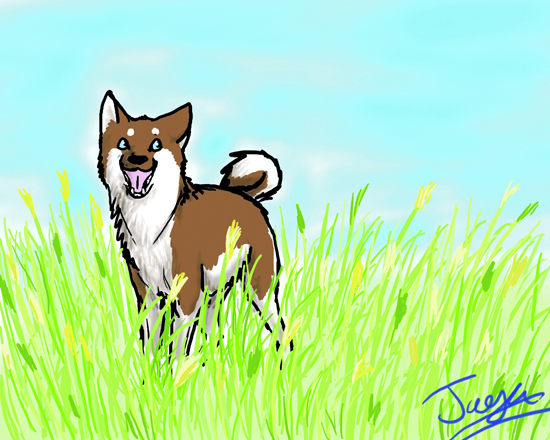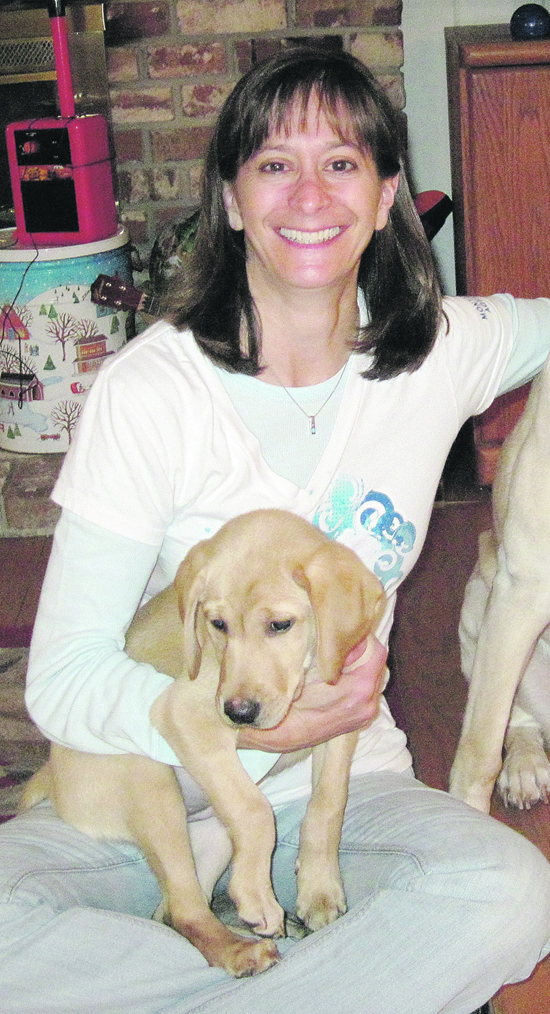| | Published May 22nd, 2013
| How to "See" a Foxtail
| | By Mona Miller, DVM |  | |
|
Tis the season of grass awns, or foxtails, growing tall and strong in fields, waiting for the wind to disperse its slender, triangular seed structure. In our area, dogs and cats often also help the plant transport these awns, which get trapped in fur as the pet walks by. There are other areas of the pet's body that can trap a foxtail, though, which serves no useful purpose for either the plant or for the pet: the nose, ears, eyes, throat, in-between toes and burrowing into skin and then into deeper structures.
 I have addressed foxtails in general in a previous article; in this, I'd like to address how we can use imaging technology to find foxtails that migrate into deep structures of the body. I recently had a case of a Brittany Spaniel dog whose foxtail burrowed into the skin on his side, then continued down into the subcutaneous and muscle tissues. It took several weeks from the start of the subcutaneous abscess to finally localize and surgically remove the foxtail. The foxtail was only about an inch long, but the amount of tissue infection and inflammation around it was approximately 6-8 inches. Clearly, imaging technology can be useful to find this "needle in a haystack."
I have addressed foxtails in general in a previous article; in this, I'd like to address how we can use imaging technology to find foxtails that migrate into deep structures of the body. I recently had a case of a Brittany Spaniel dog whose foxtail burrowed into the skin on his side, then continued down into the subcutaneous and muscle tissues. It took several weeks from the start of the subcutaneous abscess to finally localize and surgically remove the foxtail. The foxtail was only about an inch long, but the amount of tissue infection and inflammation around it was approximately 6-8 inches. Clearly, imaging technology can be useful to find this "needle in a haystack."
 Radiographs use radiation to pass through structures, which is then captured onto either photographic film or a digital recording device. The thicker or denser the structure, the whiter the image is on the film. There are five radiographic densities, in decreasing order of white to black: metal, bone/mineral, tissue/fluid, fat, and air. Since a foxtail is hard chitin material, it will show as a very faint white line in the midst of gray tissue/fluid reaction surrounding it. Radiology is only minimally useful to find a foxtail, but can be useful to determine surrounding abscess or cellulitis tissue, especially in lungs or in the abdomen.
Radiographs use radiation to pass through structures, which is then captured onto either photographic film or a digital recording device. The thicker or denser the structure, the whiter the image is on the film. There are five radiographic densities, in decreasing order of white to black: metal, bone/mineral, tissue/fluid, fat, and air. Since a foxtail is hard chitin material, it will show as a very faint white line in the midst of gray tissue/fluid reaction surrounding it. Radiology is only minimally useful to find a foxtail, but can be useful to determine surrounding abscess or cellulitis tissue, especially in lungs or in the abdomen.
 By contrast, ultrasound can differentiate tissue from fluid, and is more useful than radiographs in finding a foxtail surrounded by fluid from an abscess or tissue from cellulitis. Ultrasound waves are oscillating pressure waves with a frequency greater than what humans can hear. When these waves contact a structure, they can either be absorbed into it, pass through, or be reflected back (echo). As a side note, the sound waves can distinguish movement occurring in the structure in real time; for example, one can visualize heart contractions as they occur during a cardiac ultrasound. On an ultrasound image, fluid is black and tissue is gray. Both air and bone show up as white images. When searching for a foxtail with ultrasound, we would look for both a line of white (the foxtail itself) and a surrounding rim of black (usually the abscess fluid or the migrating tract of the foxtail).
By contrast, ultrasound can differentiate tissue from fluid, and is more useful than radiographs in finding a foxtail surrounded by fluid from an abscess or tissue from cellulitis. Ultrasound waves are oscillating pressure waves with a frequency greater than what humans can hear. When these waves contact a structure, they can either be absorbed into it, pass through, or be reflected back (echo). As a side note, the sound waves can distinguish movement occurring in the structure in real time; for example, one can visualize heart contractions as they occur during a cardiac ultrasound. On an ultrasound image, fluid is black and tissue is gray. Both air and bone show up as white images. When searching for a foxtail with ultrasound, we would look for both a line of white (the foxtail itself) and a surrounding rim of black (usually the abscess fluid or the migrating tract of the foxtail).
 In the case of the Brittany Spaniel mentioned above, the foxtail's location was determined in part by the combination of radiographs and ultrasound, to narrow down the search field.
In the case of the Brittany Spaniel mentioned above, the foxtail's location was determined in part by the combination of radiographs and ultrasound, to narrow down the search field.

|
 | | Dr. Mona Miller lives in Lafayette with her young son, two cats and Luka a new puppy. She has worked at Four Seasons Animal Hospital in Lafayette since moving here in 2001. She attended Cal as an undergrad, and received her DVM from U.C. Davis. She can be reached at Four Seasons, 938-7700, or by email to MonaSDVM@aol.com.
| | | | | | | | | | | | | |
| | | print story
Before you print this article, please remember that it will remain in our archive for you to visit anytime.
download pdf
(use the pdf document for best printing results!) | | | Comments | | |
| | | | | | | | | | | | | | | | |



